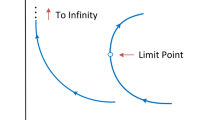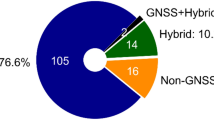Abstract
This paper addresses pre-LOI (before Lissajous orbit insertion) trajectory maneuvers for the libration point mission of CHANG′E-2, which is the first Chinese satellite to fly to the Sun-Earth L2 libration point and the first satellite ever to fly to the L2 point from lunar orbit. First, a transfer trajectory for the mission is designed based on InterPlanetary Superhighway theory under the constraint of the remaining propellant, TT&C (telemetry, track and command) and sunlight conditions. The effects of trajectory maneuver errors on the mission are also analyzed. Second, based on the analysis results, the article investigates the trajectory maneuver schemes for the lunar escape and transfer trajectory maneuvers employing mathematical models and operational strategies. The mission status based on our maneuver schemes is then presented, and the results of control operation and corresponding analysis are provided in detail. Finally, the future trajectory maneuver in the Lissajous orbit is discussed. According to the analysis of the CHANG′E-2 TT&C data, the trajectory maneuver schemes proposed in the article work properly and efficiently.
Similar content being viewed by others
References
Lo M W. The Interplanetary Superhighway and the origins program. In: IEEE Space 2002 Conference, Big Sky, MT, 2002
Serbana R, Koon W S, Lo M W, et al. Halo orbit mission correction maneuvers using optimal control. Autom, 2002, 38: 571–583
Koon WS, Lo MW, Ross S, et al. The Genesis trajectory and heteroclinic connections. In: AAS/AIAA Astrodynamics Specialist Conferencem Girdwood, Alaska, 1999. AAS 99-451
Barden B T, Howell K C, Lo M W. Application of dynamical systems theory to trajectory design for a libration point mission. J Astronaut Sci, 1997, 45: 161–178
Gómez G, Koon W S, Lo M W, et al. Invariant manifolds, the spatial three-body problem and space mission design. Adv Astronaut Sci, 2001, 109: 3–22
Gómez G, Koon W S, Lo M W, et al. Connecting orbits and invariant manifolds in the spatial restricted three-body problem. Nonlinearity, 2004, 17: 1571–1606
Barden B T. Using stable manifolds to generate transfers in the circular restricted problem of three bodies. Master degree thesis. West Lafayette: School of Aeronautics and Astronautics, Purdue University, 1994
Howell K C, Pernicka H J. Numerical determination of Lissajous trajectories in the restricted three-body problem. In: Astrodynamics Conference, 1986
Szebehely V. Theory of Orbits, the Restricted Problem of Three Bodies. New York/London: Academics press, 1967
Li M T, Zheng J H, Yu X Z, et al. Research on transfer trajectory correction maneuvers for libration point missions. Chin J Space Sci, 2010, 30: 540–546
Farquhar R W, Kamel A A. Quasi-periodic orbits about the translunar libration point. In: AIAA/AAS Astrodynamics Conference, California, 1972
Author information
Authors and Affiliations
Corresponding author
Rights and permissions
About this article
Cite this article
Wu, W., Liu, Y., Liu, L. et al. Pre-LOI trajectory maneuvers of the CHANG′E-2 libration point mission. Sci. China Inf. Sci. 55, 1249–1258 (2012). https://doi.org/10.1007/s11432-012-4585-8
Received:
Accepted:
Published:
Issue Date:
DOI: https://doi.org/10.1007/s11432-012-4585-8




